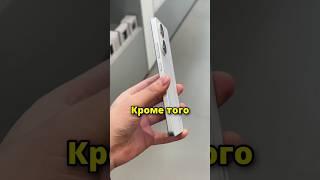
Google Ads/Analytics Attribution Models Explained - Beginner Level Tutorial
Attribution is important because it allows marketers to understand which channels are driving conversions revenue. By understanding which channels are most effective, marketers can make more informed decisions about where to allocate their resources. There are a variety of different attribution models, each with its own strengths and weaknesses. In this video, we'll explain the different attribution models and how to compare them.
The last click model is the most basic form of attribution. It assigns 100% of the credit for a conversion to the last channel that was clicked before the conversion occurred. This model is easy to understand and implement, but it has a major flaw: it ignores all of the interactions that happened before the last click. For example, if a customer saw an ad on Facebook and then clicked on a Google Ad later before finally converting on the website, the last click model would give all of the credit to Google. This ignores the role that Facebook played in the customer's journey.
The first click model is the opposite of the last click model. It assigns 100% of the credit for a conversion to the first channel that was clicked. This model addresses the flaw of the last click model by giving credit to the first channel in the customer's journey. However, it has its own flaws. For example, if a customer clicks on an ad, doesn't convert immediately, but then comes back later and converts, the first click model would give all of the credit to the ad even though it wasn't responsible for the conversion.
The linear model is a more sophisticated version of the last click model. It assigns equal credit to all of the channels that were clicked before a conversion occurred. This means that if a customer clicked on three ads before converting, each ad would get 33% of the credit. The linear model is more accurate than the last click model, but it still has its flaws. For example, it doesn't take into account how close to the conversion a channel was clicked.
The position-based model is a more sophisticated version of the first click model. It assigns 40% of the credit to the first and last channels that were clicked before a conversion occurred, and 20% of the credit to the middle channel. This means that if a customer clicked on three ads before converting, the first and last ads would get 40% of the credit each, and the middle ad would get 20% of the credit. The position-based model is more accurate than the first click model, but it still has its flaws. For example, it doesn't take into account how many times a channel was clicked.
The time decay model is a more sophisticated version of the linear model. It assigns more credit to channels that were clicked closer to the conversion. This means that if a customer clicked on three ads before converting, the ad that was clicked closest to the conversion would get more credit than the other two ads. The time decay model is more accurate than the linear model, but it still has its flaws. For example, it doesn't take into account how many times a channel was clicked.
The data-driven model is the most sophisticated attribution model. It uses data from all of the channels that were clicked before a conversion to assign credit. This means that it takes into account factors like how many times a channel was clicked, how close to the conversion it was clicked, and what type of channel it is. The data-driven model is the most accurate attribution model, but it requires a lot of data to be effective.
When choosing an attribution model, it's important to consider your goals. If you're looking for accuracy, the data-driven model is the best choice. If you're looking for simplicity, the last click or first click models may be a better choice. And if you're looking for something in between, the linear, position-based, or time decay models may be a good choice.
Thanks for watching! If you want to learn more about attribution models, be sure to subscribe. We'll be posting more articles on this topic in the future.
Chapters:
0:00 - Why is Attribution Important?
0:49 - Explaining the different attribution models
1:06 - The Customer Journey
1:45 - What is Last Click Attribution?
2:16 - What is First Click Attribution?
2:58 - What is Linear Attribution?
3:09 - What is Time-Decay Attribution?
3:27 - What is Position-Based Attribution?
4:09 - What is Data-Driven Attribution?
5:28 - The Model Comparison Tool in Google Ads
6:55 - Smart Bidding & Attribution Models Explained
7:27 - Pros & Cons of Attribution Models
8:59 - Outro, Please Subscribe!
---
Subscribe 👉 https://bit.ly/2Yh13hQ
Discord 👉https://discord.gg/zvGPHzfmDR
Visit my website 🌐 https://bit.ly/2YevDLT
Checkout other videos👉 https://bit.ly/2FAQAqh
Twitter 🔎 https://bit.ly/2JtmAh9
LinkedIn 👷♂️ https://bit.ly/2XxxM6o
The last click model is the most basic form of attribution. It assigns 100% of the credit for a conversion to the last channel that was clicked before the conversion occurred. This model is easy to understand and implement, but it has a major flaw: it ignores all of the interactions that happened before the last click. For example, if a customer saw an ad on Facebook and then clicked on a Google Ad later before finally converting on the website, the last click model would give all of the credit to Google. This ignores the role that Facebook played in the customer's journey.
The first click model is the opposite of the last click model. It assigns 100% of the credit for a conversion to the first channel that was clicked. This model addresses the flaw of the last click model by giving credit to the first channel in the customer's journey. However, it has its own flaws. For example, if a customer clicks on an ad, doesn't convert immediately, but then comes back later and converts, the first click model would give all of the credit to the ad even though it wasn't responsible for the conversion.
The linear model is a more sophisticated version of the last click model. It assigns equal credit to all of the channels that were clicked before a conversion occurred. This means that if a customer clicked on three ads before converting, each ad would get 33% of the credit. The linear model is more accurate than the last click model, but it still has its flaws. For example, it doesn't take into account how close to the conversion a channel was clicked.
The position-based model is a more sophisticated version of the first click model. It assigns 40% of the credit to the first and last channels that were clicked before a conversion occurred, and 20% of the credit to the middle channel. This means that if a customer clicked on three ads before converting, the first and last ads would get 40% of the credit each, and the middle ad would get 20% of the credit. The position-based model is more accurate than the first click model, but it still has its flaws. For example, it doesn't take into account how many times a channel was clicked.
The time decay model is a more sophisticated version of the linear model. It assigns more credit to channels that were clicked closer to the conversion. This means that if a customer clicked on three ads before converting, the ad that was clicked closest to the conversion would get more credit than the other two ads. The time decay model is more accurate than the linear model, but it still has its flaws. For example, it doesn't take into account how many times a channel was clicked.
The data-driven model is the most sophisticated attribution model. It uses data from all of the channels that were clicked before a conversion to assign credit. This means that it takes into account factors like how many times a channel was clicked, how close to the conversion it was clicked, and what type of channel it is. The data-driven model is the most accurate attribution model, but it requires a lot of data to be effective.
When choosing an attribution model, it's important to consider your goals. If you're looking for accuracy, the data-driven model is the best choice. If you're looking for simplicity, the last click or first click models may be a better choice. And if you're looking for something in between, the linear, position-based, or time decay models may be a good choice.
Thanks for watching! If you want to learn more about attribution models, be sure to subscribe. We'll be posting more articles on this topic in the future.
Chapters:
0:00 - Why is Attribution Important?
0:49 - Explaining the different attribution models
1:06 - The Customer Journey
1:45 - What is Last Click Attribution?
2:16 - What is First Click Attribution?
2:58 - What is Linear Attribution?
3:09 - What is Time-Decay Attribution?
3:27 - What is Position-Based Attribution?
4:09 - What is Data-Driven Attribution?
5:28 - The Model Comparison Tool in Google Ads
6:55 - Smart Bidding & Attribution Models Explained
7:27 - Pros & Cons of Attribution Models
8:59 - Outro, Please Subscribe!
---
Subscribe 👉 https://bit.ly/2Yh13hQ
Discord 👉https://discord.gg/zvGPHzfmDR
Visit my website 🌐 https://bit.ly/2YevDLT
Checkout other videos👉 https://bit.ly/2FAQAqh
Twitter 🔎 https://bit.ly/2JtmAh9
LinkedIn 👷♂️ https://bit.ly/2XxxM6o
Тэги:
#attribution_models #google_ads_attribution_models #google_ads_attribution #attribution_model #attribution_google_analytics #google_analytics_attribution #data-driven_attribution #last_click_attribution_model #google_adwords_attribution_models #data_driven_attribution_model #google_attribution_models #attribution_modeling #customer_attribution #marketing_attribution #google_ads_attribution_model #google_adwords_attribution #multi_touch_attribution_modeling #ray_sawvellКомментарии:
Pékin Express : L'épopée des maharadjas / EPISODE 2 / saison 19
5thavenuetx chaîne 2
Большая опера - 2019. 6 сезон. 1 выпуск
Телеканал Культура
СВЕТ И ЭЛЕКТРИЧЕСТВО В ЛЕСУ, ТАЙГЕ. Солнечные панели, аккумуляторы, лампочки, З/У для автономки.
Максим Медведев (Выживание, Бушкрафт)
HOW TO CREATE MIRROR IMAGE IN PHOTOSHOP CC
Noreena Pugh
РАСПУСКАЮЩИЕСЯ ЦВЕТЫ ФУТАЖИ. Видео Футаж - Цветы - Time Laps
Studio Pilot Photography


























